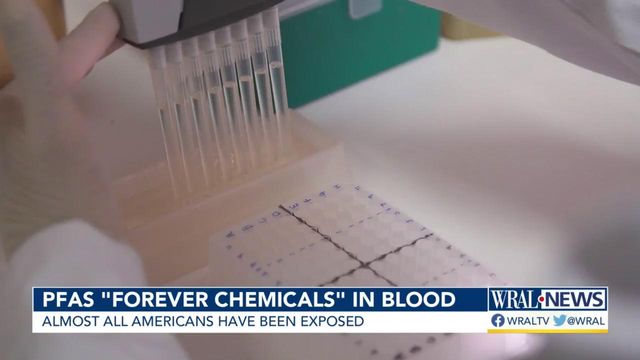PFAS: 'Forever chemicals' part of widespread environmental crisis
What some are now calling a chemical contamination crisis may have started as early as the 1940s, when DuPont introduced a brand-name coating called Teflon.
The class of chemical compounds that allow eggs to easily glide off non-stick cookware, waterproof mascara to say put, and food takeout containers to repel grease are called PFAS, an acronym for per and poly-fluoroalkyl substances. They are commonly referred to as “forever chemicals” because of how long they can stay in the environment and in our bodies.
“The scale and expanse of this issue is just mind-blowing,” Sydney Evans said. Evans is a scientist with the Environmental Working Group, an activist group that is pushing for policy changes to mitigate PFAS pollution.
Recent studies show the chemicals have been integrated into the ecosystem, with researchers finding PFAS in everything from rainwater to the plants and animals in our food supply. According to a CDC report, nearly all Americans have PFAS in their blood.
“That’s why it’s so important to address this from all angles, because we have been exposed in so many ways and there is mounting evidence about how toxic these substances can be at such low levels,” Evans said.
PFAS exposure has been linked to cancer and negative impacts on reproductive, developmental, and immune health.
There are some private labs that test PFAS blood levels, but it's not cheap.
I tried out a $400 at-home test from Eurofins and EmpowerDX. About a week after collecting and shipping my samples, results showed that my PFAS exposure wasn’t above average according to a median scale based on CDC data.
That wasn’t the case for Fayetteville resident Debra Stewart and her family, who live near a Chemours chemical plant. Officials say Chemours released a host of PFAS chemicals into the air, soil, and water for decades… leading to drinking water pollution in the Cape Fear River and thousands of surrounding wells.
Stewart found out a few years ago that her well was contaminated and suspects the health problems her family and farm animals have been experiencing are related to exposure.
After participating in a study by NC State, she learned that her family and animals had alarmingly high levels of PFAS in their blood. “I feel like we’ve been dealt a hand of death from the Dupont Chemours plant and I don’t think they care what is happening to us,” Stewart said.
Chemours did not directly respond to a request for comment, but directed to their website and compliance documents.
There are thousands of different PFAS compounds. After years of research to prove one is unsafe, companies use an alternative with a small chemical modification and weaker toxicity research.
“Isn’t it sad that these companies can use chemicals until they are proven to be unsafe, instead of the other way around?,” pondered Wilmington resident Emily Donovan, who started a grassroots organization called Clean Cape Fear. “My family never signed up to be a guinea pig.”
Chemical companies, including Chemours, are involved in a number of ongoing legal battles. Some municipalities are demanding that polluters foot the bill for pricey upgrades they’ve had to make to clean chemicals from drinking water. The Cape Fear Public Utility Authority is now able to fully remove PFAS from drinking water with a high-tech carbon filter system, but the utility says the project cost $43 million to install with an an additional $5 million annually to operate. That cost may be passed on to the rate-payer, as many Wilmington residents including Donovan say they’ve seen their water bills increase in recent months.
Chemours is pushing back against attempts to regulate PFAS, including legal action against the EPA’s recent drinking water advisory levels, lowering the safe exposure recommendation of some chemicals to nearly zero. CHemours is also currently appealing a permit for a groundwater barrier wall and water treatment system, saying it is uncertain it could comply with mandates to cut pollution of the chemicals.
The EPA has started the process to classify two of the most widely-used PFAS as hazardous substances under the so-called superfund law, but there are nearly 12,000 different PFAS compounds.
“We need to regulate them as a toxic family, as a class… and until we do that, we’re just going to be on this toxic treadmill where we ban one or two and there are thousands of others that continue to be used by the industry,” said Erik Olson, a strategist with the Natural Resources Defense Council who has been working on safe drinking water policy for nearly three decades.
"Unfortunately, regulation in the U.S. is likely decades away,” he said.












